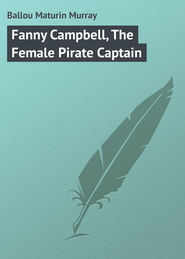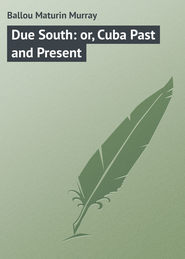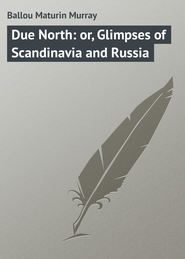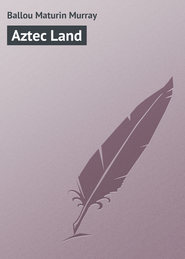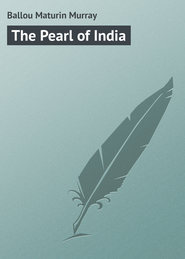По всем вопросам обращайтесь на: info@litportal.ru
(©) 2003-2024.
✖
The New Eldorado. A Summer Journey to Alaska
Настройки чтения
Размер шрифта
Высота строк
Поля
It is a well-known fact, proven by official observations, that the climate of the Pacific coast is considerably more temperate than that of the same latitude on the Atlantic side of the continent. The record of ten consecutive years, kept at Sitka, gave an annual mean of 46° Fah.
This is in latitude 57° 3′ north, and is found by comparison to be four degrees warmer than the average of Portland, Me., or six degrees warmer than the temperature of Quebec, Canada. The average winter is milder, therefore, at Sitka than it is at Boston, however singular the assertion may at first strike us, in connection with the commonly entertained idea of this northwestern Territory. The mean winter temperature of Sitka and Newport, R. I., are very nearly the same, and there is only a difference of six degrees in their mean yearly temperature, though there is a difference of sixteen degrees of latitude.
We have before us a printed letter which appeared in the “Philadelphia Press,” signed by Mr. C. F. Fowler, late an agent of the Alaska Fur Company, who has resided for twelve years in Alaska, in which he says: “You who live in the States look upon this country as a land of perpetual ice and snow, yet I grew in my garden last year, at Kodiak, abundant crops of radishes, lettuce, carrots, onions, cauliflowers, cabbages, peas, turnips, potatoes, beets, parsnips, and celery. Within five miles of this garden was one of the largest glaciers in Alaska.” In a certain sense it is surely a country of paradoxes.
The harbor of Sitka is never closed by ice, which cannot be truthfully said of Boston or New York.
Dr. Sheldon Jackson, long resident in the Territory as United States general agent of education for Alaska, tells us that the temperature of Sitka and that of Richmond, Va., are nearly identical. Mr. McLean of the United States Signal Service, who has been located at Sitka for several years, says, “the climate of southern Alaska is the most equable I ever experienced.”
There is in Alaska a very large section of country, composed of islands and the mainland, where the average temperature is higher than at Christiania, capital of Norway, or Stockholm, capital of Sweden, – where the winters are milder and the fall of rain and snow is less than in southern Scandinavia, which is the geographical counterpart of Alaska in the opposite hemisphere. Sitka harbor is no more subject to arctic temperature than is Chesapeake Bay. “It must be a fastidious person,” said Mr. Seward in his speech upon Alaska, “who complains of a climate in which, while the eagle delights to soar, the hummingbird does not disdain to flutter.” If it is sometimes misty and foggy on the coast, it is not so to a greater extent than is the case during a large portion of the year in the cities of London and Liverpool.
Both the islands and mainland of this latitude afford ample grass for cows, sheep, and horses, also producing, with ordinary care, the usual domestic vegetables, as we have shown, the assertion of certain writers to the contrary notwithstanding. We have not far to look for the cause of this favorable temperature existing at so northerly a range of latitude. The thermal stream known as the Japanese Current, coming from the far south charged with equatorial heat, is precisely similar in its effect to that of the better known Gulf Stream on our Atlantic coast, rendering the climate of these islands and the coast of the mainland of the North Pacific remarkably warm and humid. We speak especially and at length of this subject of the temperature of Alaska, because a wrong impression is so generally held concerning it. At a distance from the coast the temperature falls, and most of the inland rivers are closed by ice half the year. Even in the interior we are in about the same latitude and average temperature of St. Petersburg. Thus on the line of Behring Strait the annual mean at Fort Yukon, which lies just inside of the Arctic circle, six hundred miles inland from Norton Sound, is 16.92°; this is in latitude 64° north. Along the coast of southern Alaska the fall of snow is not greater in amount than is experienced during an ordinary winter in the New England States, and it disappears even more quickly than it does in Vermont and New Hampshire. In the interior and at the far north, the quantity of snow is of course much greater, and covers the ground for about half the year.
But where the sun shines continuously throughout the twenty-four hours, the growth of vegetable life is extremely rapid. The snow has hardly disappeared before a mass of herbage springs up, and on the spot so lately covered by a white sheet, sparkling with frosty crystals, there is spread a soft mantle of variegated green. The leaves, blossoms, and fruits rapidly follow each other, so that even in this boreal region there is seed-time and harvest. The annual recurrence of this carnival season is all the more impressive in the realm of the Frost King.
The Japanese Current, already referred to, strikes these shores at Queen Charlotte Island in latitude 50° north, where it divides, one portion going northward and westward along the coast of Alaska, and the other southward, tempering the waters which border upon Washington, Oregon, and California; hence their mild climate. Sea captains who frequently make the voyage between San Francisco and Yokohama have told the author that this Japanese Current – with banks and bottom of cold water, while its body and surface are warm – is so clearly defined as to be distinguishable in color from the ordinary hue of the Pacific Ocean, and that its deep blue forms a visible line of demarcation between the greater body and itself along its entire course. The thermometer will easily define such a current, and this the author has often seen demonstrated from a ship’s deck; but it must be a very keen eye that can distinguish such differences of color at sea as the above assertion would indicate.
In so extended a territory as that of Alaska, with broad plains, deep valleys, and lofty mountain ranges, it is reasonable to suppose there must be a great diversity of climate. The brief inland summer is represented to exhibit marked extremes of heat, and the winter corresponding extremes of cold. W. H. Dall, an undoubted authority in all matters relating to the valley of the Yukon, though his book upon the country was published some twenty years since, says: “At Fort Yukon I have seen the thermometer at noon, not in the direct rays of the sun, stand at 112°, and I was informed by the commander of the post that several spirit thermometers graded up to 120° had burst under the scorching sun of the Arctic midsummer.” Fort Yukon is the most northerly point in Alaska inhabited by white men. It is estimated that ten or twelve thousand Eskimos live in the uninviting region north of the Yukon valley. They are a most remarkable people, who are struggling with the cold three quarters of the year, and who seem to be strangely content with a bare existence. Their days and nights, their seasons and years, are not like those of the rest of the world. Six months of day is succeeded by six months of night. They have three months of sunless winter, three months of nightless summer, and six months of gloomy twilight. No Christian enlightenment or religious teaching of any sort has ever found its way into this region. The people believe in evil spirits and powers who are in some way to be propitiated, but have no conception of a Divine Being who overrules all things for good. Like the southern Alaskans they are superstitious to the last degree, and discover omens in the most ordinary occurrences. The decencies of life are almost totally disregarded among them, their highest purpose being apparently the achievement of animal comfort and gorging themselves with food and oil.
Their sky is famous for its beautiful auroral display – gorgeous pyrotechnics of nature – in the long, chill winter night, when a brilliant arch spans the heavens from east to west, marked with oscillating hues of yellow, blue, green, and violet, rendering everything light as day for a few moments, then falling back into darkness. So off the coast of Norway among the Lofoden Islands, the hardy men who pursue the cod-fishery in that region, during the winter season, depend upon the Aurora Borealis to light their midnight labor, that being considered the most favorable hour of the twenty-four to secure the fish. Without this nocturnal meteoric illumination, it would be darkness indeed in the polar regions for half the year.
This phenomenon in its Arctic development is so much intensified as to quite belittle the exhibition with which we are familiar in New England, and which is called the Northern Lights.
It is certainly very odd that these boreal natives, the Eskimos proper, should have precisely the same mode of salutation which the New Zealand Maoris practice, though they are separated by so many thousand miles of ocean, namely, the rubbing of noses together between two persons who desire to evince pleasure at meeting. No matter how oily the Eskimo’s nose may be, or however dirty the Maori’s face, to decline this mode of salutation when offered is to give mortal offense, either in tropical New Zealand or in arctic Alaska, at Point Barrow or at Ohinemutu. “The home of the Eskimos,” says Bancroft, in his excellent work on the natives of the Pacific coast, “is a model of filth and freeness. Coyness is not one of their vices, nor is modesty ranked among their virtues. The latitude of innocency characterizes all their social relations; they refuse to do nothing in public that they would do in private.” They seem to live in a primitive state, without craving anything of the white man’s possessions, except tobacco and rum, which are smuggled to them by contrabandists, who come on to the coast to trade for furs and ivory. This class of traders, sailing from San Francisco, and stopping at the Hawaiian Islands to procure a few hogsheads of the vilest intoxicant which is made, pass along the northern coast of Alaska, touching at certain places where they are expected annually. The walrus not only supplies the Eskimo with food, but its tusks are used as the common currency among them, and are secured in considerable quantities by the illicit traders. The encroachment of unscrupulous contrabandists renders the utter extinction of the walrus only a question of time. It is to be regretted that the wholesale slaughter of this animal cannot be prevented. If this could be brought about, as in the instance of the fur-seal, we might continue to get ivory from the shores of the Frozen Sea for all time. The natural enemy of the walrus is the polar bear, but his most relentless pursuer is man.
These Eskimos wrap their dead in skins closely sewed and lay them in the tundra, together with the worldly possessions of the deceased, without any funeral ceremonies. It would be sacrilege for any one to disturb this property left with the body, and no member of the tribe would think of doing so.
In the Yukon Valley the remains of elephants and buffaloes are found fossilized, as those of the rhinoceros were discovered on the opposite continent in Siberia, thus showing that this now arctic region was once tropical, a conclusion, nevertheless, which seems to be almost impossible to the traveler while gazing upon Niagaras of frozen rivers in the month of July.
The Yukon River is the Mississippi of Alaska, forming with its several tributaries the great inland highway of the Territory. As yet there are no roads in the country, everything is transported by water or on the backs of the natives; the great importance of such an extensive water-way can therefore be readily understood. The magnitude of the Yukon – one of the twelve longest rivers in the world – will be realized by the fact that it is still a matter of doubt among different writers which of the two rivers named is the largest with respect to the volume of their currents, though Ivan Petroff, in his report as agent of the Secretary of the Interior, speaks thus confidently upon the subject: “The people of the United States will not be quick to take the idea that the volume of water in an Alaskan river is greater than that discharged by their own Mississippi; but it is entirely within the bounds of honest statement to say that the Yukon River, the vast deltoid mouth of which opens into Norton Sound, of Behring Strait, discharges every hour of recorded time as much, if not one third more, water, than the ‘Father of Waters’ as it flows to the Gulf of Mexico.”
This writer does not seem to us given to exaggeration, but still we are a little inclined to question the accuracy of his estimate as to the volume of water borne seaward by this great Alaskan river.
The Yukon rises in the Rocky Mountain range of British Columbia; entering Alaska at about 64° north latitude, and pursuing its course nearly from east to west across the entire Territory, it finally empties, as stated, into Behring Strait through Norton Sound. The river is navigable for fifteen to eighteen hundred miles, while its entire length is computed at over two thousand miles, with an average width of five miles for half the distance from its mouth. There are several places on the lower Yukon where one bank is invisible from the other. It is seventy-five miles across its five mouths and the intersecting deltas. At some places, six or seven hundred miles inland, the river expands to twenty miles in breadth, thus forming in the interior a series of connected lakes, which explorers pronounce to be deep and navigable in all parts. This great water-way can only be said to have been partially explored, but those persevering pioneers who have made the attempt to unravel its mysteries have given us extremely interesting details of their experiences, all uniting in bearing witness that its banks are rich in fur-bearing animals, and that its waters are stocked with an abundance of fish, including the all-pervading salmon. These valuable fishes follow the same instinct which they exhibit in other parts of the world, in their annual pilgrimage of reproduction, that is, after entering a river’s mouth, to advance as far as possible towards its source. Besides fish and fur-bearing animals, the region through which the Yukon flows contains abundant deposits of gold, silver, copper, nickel, and bituminous coal. Some placer gold mines which were worked on its banks and in its shallows, so long as the season permitted, are credibly reported to have yielded to one party of prospectors nearly eighty dollars per day to each man.
The trouble to be encountered in working these placers is owing to their remoteness from all sources of supply, and the exposure to the long winters which prevail in the placer gold-producing regions. These are obstacles, however, which will one of these days be overcome by the erection of suitable shelter, and a rich new mining field will thus be permanently opened. There are a number of trading-posts along the course of the Yukon at which white men reside permanently to traffic with the natives, purchasing furs from such as will hunt; and there are many who are represented to be industrious and provident, supplying the whites with meat and fish as well as with pelts, fully appreciating the advantage of steady habits and regular wages. In this respect the inland tribes differ materially from most of those living on the coast; the latter care little for work or wages until they are driven by necessity to seek employment. We speak in general terms; there are of course many worthy exceptions, but savage races have little idea of thrift, and like the wild animals are aroused to action only by the demands of hunger. In equatorial regions where the nutritious fruits are so abundant that the natives have only to pluck and to eat, they are sluggish, dirty, and heedless, living only for the present hour. In this Arctic region where the sea is crowded with food and the fields are covered with berries, the same listlessness prevails as regards the future with nine out of ten of the aborigines. These remarks do not apply to the Aleuts, from whom the Commercial Company obtains its workmen. These are mostly half-breeds, who are far more civilized than are our Western Indians.
The proprietors of the Treadwell gold mine, Douglass Island, and of the works at Silver Bow Basin, employ large numbers of the natives, finding them to be reliable and industrious laborers.
“Where we can separate these Alaskan natives from the objectionable influences which are apt to grow up in populous centres, and especially from multitudes of adventurous miners who come from a distance, we find them to be faithful and tractable workers,” said an employer to us.
“How about the Chinese?” we asked.
“They are excellent workers,” was the reply. “Set them a task, show them how to perform it, and it will surely be done. They are almost like automatons in this respect and require no watching.”
“Then why not employ them more generally?”
“Because of the prejudice, the unreasonable prejudice, against them. Our other workmen rebel if we keep many Chinamen on the pay-roll.”
This corresponded exactly with the author’s experience elsewhere, in various parts of the world where the Chinese have sought a new home outside of China. John is not perfect, but he is infinitely superior to a large portion of the drinking, rowdy, and restless foreign element which fills so large a place in the labor field of this country.
The greatest care is necessary to keep spirituous liquors away from the aborigines, a craving for which is beyond their control where there is a possibility of its being obtained. When they fall under its influence they seem to utterly lose their senses, and become dangerous both to themselves and to the whites. As has been intimated, the only means of locomotion is afforded by the watercourses, and the natives, being excellent canoeists, find ample employment of this nature, both in traversing the rivers and along the shore of the islands. The waters of the Yukon, like those of the Neva at St. Petersburg, freeze to a depth of five or six feet in winter.
CHAPTER XIII
Sailing Northward. – Chinese Labor. – Unexplored Islands. – The Alexander Archipelago. – Rich Virgin Soil. – Fish Canning. – Myriads of Salmon. – Native Villages. – Reckless Habits. – Awkward Fashions and their Origin. – Tattooing Young Girls. – Peculiar Effect of Inland Passages. – Mountain Echoes. – Moonlight and Midnight on the Sea.
Let us observe more order in these notes, and resume the course of our experiences in consecutive form.
As we speed on our sinuous course northward, inhaling with delight the pure and balmy atmosphere, bearing always a little westerly, winding through narrow channels which divide the richly wooded wilderness of islands, avoiding here and there the ambuscaded reefs, the pleasurable sensation is intense. The scenery, while in some respects similar to that of the St. Lawrence River and the Hudson of New York, is yet infinitely superior to either. After having reached latitude 54° 40′ we come upon Dixon Entrance, a reach of the sea which separates Alaska from British Columbia, and from this point we are sailing exclusively in the purple shadow of our own shore, and in the waters of the United States. At times we pass islands as large as the State of Massachusetts, whose picturesque and irregular mountainous surfaces are covered with immemorial trees, and whose unknown interiors are believed to be rich in coal, iron, silver, and other metals. The axe has never echoed in the deep shade of these dense plantations of nature; they form a pathless wilderness, solemn and silent, save for the stealthy tread of wild beasts, the mournful music of waving pines, and the occasional notes of wandering seabirds. The migratory flocks of the tropics as a rule go farther north to raise their broods, but a few, weary of wing, shorten their aerial journey and build nests on these islands. For many centuries past the great columnar trees have grown to mammoth size, and have then fallen only by the weight of years, enriching the ground with their decayed substance and giving place to another similar growth, which, in its turn, has also flourished and passed away. How like the course of human races! This process has been going on perhaps for twice ten thousand years. “Nature alone is antique,” says Carlyle. The past history of Alaska, except for a comparatively short period, is a blank to the people of the nineteenth century.
Day after day there is a continuous and unbroken chain of mountain scenery. On the right of our course is a broad strip of the mainland, an Alpine region, thirty miles in width, which forms a part of southern Alaska, bounded on the east by British Columbia, and on the west by the many spacious islands, which create so perfect a breakwater that the constant swell of the contiguous ocean is not felt. Some of these islands lie within a quarter of a mile of each other, on either side of our way, and yet the water is far too deep to admit of anchoring, the peaks rising abruptly from unknown depths to thousands of feet above the sea. The channels seem still more narrow from the great height of the mountains which line the course. The eye catches with delight the bright ribbons of waterfalls tumbling down their sides, in gleeful uproar, foaming and sparkling towards the depths below. These are fed by melting snow and hidden lakes far up in the cloud-screened summits. Some of these waterfalls, narrow and swift, leap from point to point, now forming small cascades, and now continuing in a perpendicular form like a column of crystal. Others, so abrupt and precipitous are the heights from which they are launched, fall in an unbroken stream, clinging to the cliffs at first, but quickly expanding into a thin sheet rivaling the Bridal Veil of the Yosemite, and reaching the base in a constant gauzelike spray.
The wide, open tracks seen now and then on the steep, thickly-wooded mountain sides, reaching from high up to the snow-line down to the very surface of the water, are the pathways swept by giant avalanches. What immense power and lightning-like speed are suggested by the broad, clean swath that is left! The wind caused by the rushing avalanches is almost equally resistless, the trees on either side of the track being torn into splinters by it.
Now and again, above the tops of the giant pines, one can see moving objects on the exposed peaks and cliffs, almost too far away and too small for identification, but we know them to be wild mountain goats, – the Alaskan chamois, – quite safe from the hunters in these perilous heights, never trod by the foot of man. The tender glow of twilight enshrouding mountain peaks, emerald isles, and the gently throbbing bosom of the sea, added daily a witching charm to a scene which already seemed perfect in beauty.
The principal island group lying off the shore of southwestern Alaska is named the Alexander Archipelago, in honor of the Tzar of Russia. It extends about three hundred miles north and south, and is seventy-five miles from east to west, embracing over eleven hundred islands, scarcely one of which has been explored. The group reaches from Dixon Entrance to Cross Sound, in latitude 58° 25′ north. Upon landing at one of these islands it was found to be covered by an impervious forest; the mass of timber and undergrowth was so compact as to defy our progress. The tangle of bushes, roots, vines, and branches formed almost as impenetrable a wall as though built of masonry. The wildest jungles of India are not more dense. Where not covered and hidden by trees, the earth was flecked here and there by the sun, being carpeted with moss and ferns so thickly spread as to form a spongy surface, upon which only the velvety feet of small wild animals could be sustained. A human pedestrian, were he to attempt to pass over it, would sink in this vegetable compound knee-deep at every step. There are no paths in these jungles; the natives have no occasion to penetrate them, their living comes from the sea, and the river courses are their hunting grounds.
This virgin soil, were it to be drained and cleared of trees, would be rich beyond calculation, while the climate is such as to warrant the growth and ripening of any vegetation which will thrive on the Atlantic coast north of Chesapeake Bay. One who has not seen it in Alaska knows not what rank and luxuriant forest undergrowth is. No tropical islands can surpass the Alexander Archipelago in this respect. Thus far no one has come to this region with the idea of testing its availability for agricultural purposes; it is other business which has attracted them. Nothing of any account has ever been done in the way of stock-raising, though the winters of southern Alaska, of Kodiak, and the Aleutian Islands are much milder than are those of Wyoming or northern Dakota, and there is plenty of food for innumerable herds all the year round. If government will but give the Territory of Alaska proper land laws, this region will promptly invite emigration, and be rapidly peopled by thrifty stock-growers.
As we increase our northern latitude forests of tall cedars, spruce, and hemlock still line the shore of the mainland, and cover the countless islands with a mantle of softest green. It is not surprising that artists become enthusiastic over the infinite variety of shades found in these verdant woods, an effect which we have never seen excelled even in equatorial regions. Gliding over the still, deep, pellucid surface of the ocean, we behold these cliffs, forests, and mountains, with coronets of snow reflected therein, as though there was another world below, like that above the rose-tinted sea. One finds almost exactly repeated here the bold, towering peaks, and low-lying rocky isles of the Lofoden group in the far North Sea of the opposite hemisphere, whose sharp, jagged pinnacles have been aptly compared to shark’s teeth.
Near Cape Fox, on the mainland, there are two large fish-canning establishments, where salmon are packed in one pound tin cases for shipment to distant markets, and in which a few Chinamen are employed. Some Indian women also find occupation in the establishment, while their husbands capture and bring in the fish in large quantities. This is a rapidly growing and profitable business in this region, there being already forty or fifty such factories along the coast and among the islands north of Cape Fox.
Kasa-an Bay makes into Prince of Wales Island twenty miles, more or less, from Clarence Strait. Here there are several villages of Kasa-an Indians. No spot on the coast is more famous for the abundance and excellence of its salmon; at certain seasons the waters of the bay swarm with them. Here is a large cannery, or fish-packing station, where native women do most of the indoor work. Two thousand barrels of salted salmon were shipped from this bay last year. This was independent of those used in canning. There would seem to be no limit to the expansion of an industry that can furnish such desirable, every way wholesome, and nutritious food to be sold in all parts of the world.
The North Pacific Trading and Packing Company of San Francisco has been doing a profitable business on the coast for many years. In spite of government neglect, commerce is steadily increasing and developing Alaska; it invades all zones, proving the greatest of civilizing agencies. Not only is it the equalizer of the wealth, but also of the intelligence, of nations, and this one branch alone is gradually populating whole districts. When the active packing season is over there is still profitable employment for all. Some are occupied in making the tin cans to hold one pound each; others are taught to become coopers, furnishing the casks for shipping such fish as are split, salted, and exported in that form; while others are occupied in making pine-wood boxes to contain two dozen each of the filled cans. Thus a well-conducted fish-packing establishment employs many people, and presents a busy scene all the year round.
The salmon are so plenty in the regular season that an Indian will sometimes deliver at the canning factory three or four canoe-loads in a single day. They are mostly caught by net or seine, but often during the height of the season the natives absolutely shovel the salmon out of the water and on to the shore with their paddle blades. We were told that as many as three thousand salmon, and even more, are sometimes taken at a single haul of the seine; also that fish of this species weighing from twenty to thirty pounds were common here. Great numbers are discarded at the factories because they do not prove to be of the high pink color which is required by the purchasers and consumers. It seems that the bears know very well when the run of salmon commences, and that there are certain quiet inlets where the fish are sure to get crowded and jammed, so that Bruin has only to reach out his paws and draw one after another on to the shore and eat until he has his fill. The bear-paths leading to these spots are strongly marked, and the animals are thus easily tracked and shot by the hunters. It is the white men who capture them most generally, as the natives have some mysterious reverence and fear combined regarding this animal. They do hunt them, however, but shrive themselves of all sense of wrong by going through some mystic rites. Mr. Charles Hallock says: “There are bears enough in Alaska, grizzly, cinnamon, and black, to furnish every man on the Pacific with a cap and overcoat, and leave breeding stock enough for next year’s supply.” The grizzly bear is a dangerous animal to encounter single-handed. A bullet seems to have no more effect upon him, unless it strikes a vital spot, than it does upon an elephant. It is necessary to use guns of large calibre when hunting the animal, and the whites rarely seek them unless several tried men band together for the purpose.
From time to time small native villages are seen on the islands and the mainland, all typical of the people, and quite picturesque in their dirtiness and peculiar construction. Some of their cabins are built of boards, but mostly they are rude, bark-covered logs. In front of these dwellings stand totem-poles, presenting hideous faces carved upon them in bold relief, together with uncouth figures of birds, beasts, and fishes. A portion of these tall posts are weather-beaten and neglected, significantly tottering on their foundations, green with mould, unconsciously foreshadowing the fate of the aboriginal race. Groups of natives in bright-colored blankets, with scarlet and yellow handkerchiefs on their heads, come into view, watching us curiously as we glide over the smooth water, while bevies of half-naked children are seen shifting hither and thither in clamorous excitement. What wonderfully bright, black eyes these children have! Some of the women are gathering kelp, for the shores are lined with edible algæ, possessing not only fine nutritious qualities, but being also a recognized tonic, with excellent medicinal properties. This sea-product is collected in the most favorable season of the year, and after being pressed into convenient sized and esculent cakes is stored for future use. The native hamlets are always built near to the shore, accessibility to the water being the first consideration, because from that source comes nine tenths of their subsistence. To clear the forest and secure open fields presupposes more thrift and application than these natives possess; but it would unveil some of the richest soil in the world. These Alaskans have no idea of sewerage, or the proper disposal of domestic refuse. All accumulations of this sort are thrown just outside the doors of their dwellings, to the right and left, anywhere in fact which is handiest. The stench which surrounds their cabins, under these circumstances, is almost unbearable by civilized people, and must be very unwholesome. These natives have broad faces, small, pig-like eyes, and high cheek bones, not very nice to look upon, yet not without a certain expression of real intelligence gleaming through the accumulated dirt.
“What is needed here,” said a humorous observer to us, “is the mission teacher with his Bible, spelling-book, and – soap!”
The women cut their hair short on the forehead, nearly even with the eyebrows, causing one to surmise that these Thlinkits – a generic name given to the tribes in this vicinity – must have set the fashion of “banging” the hair, which is so popular among civilized belles. Just so the Japanese women originated the hideous fashion of the “bustle.” The author saw this awkward and unbecoming appendage worn upon the backs of the women of Yokohama, Tokio, and Nagasaki three years before it appeared upon the streets of Boston and New York. And now we hear of the “clinging” style of drapery, in which underskirts even are discarded, called the Grecian or classic style. Alas! will nothing but extremes satisfy the importunate demands of fashion? Heaven send that we do not import another fashion from Alaska or the South Seas, namely tattooing. It is quite common here, among young girls of about twelve years of age, whose cheeks and chins are often thus disfigured by irregular lines. The more the natives associate with the whites, however, the more rarely this tattooing is resorted to, and it may be said, as a fashion, to be going out in Alaska, though it is undoubtedly one of the most widely diffused practices of savage life, from the Arctic to the Antarctic circle.
The Alaskans have an original way of producing this indelible marking, the color being fixed by drawing a thread under the skin, whereas the usual mode among various savages is by pricking it in with a needle. The favorite colors are red and blue. We were told that common women were permitted to adorn their chins with but one vertical line in the centre, and one parallel to it on either side, while a woman of the better or wealthier class is allowed two vertical lines from each corner of the mouth. The New Zealand Maori women tattoo their chins in a very similar manner, keeping the rest of the face in a natural condition.
We had threaded the intricate labyrinth of islands, bays, and channels, guarded by miles upon miles of sentinel peaks, nearly all day, on one occasion, under a depressing fog and rain, when suddenly a bold headland was rounded, which had seemed for hours to completely bar our way, and we passed out from under the shadow of the frowning cliffs and the gloom of the dark fathomless waters just as the sun burst forth, warm, bright, and resistless, while the view expanded before us nearly to the horizon. The mist, like shrouded ghosts, stole silently away, vanishing behind the rocks and cliffs. Every dewy drop of moisture, on ship and shore, glittered like diamonds in the dazzling rays of the new-born light, changing the verdant islands into a glory of color, and the whole view to one of majestic loveliness, through which we glided as smoothly as though in a gondola upon the Grand Canal at Venice.
When approaching a landing or anchorage, a signal gun is fired from the forecastle of the ship, creating a series of echoes deep, sonorous, and startling, but especially remarkable for the number of times the sound is repeated. One single gun becomes multiplied to a whole broadside. The report is taken up again and again by other localities, and thus is conveyed for miles away, finally sinking to a whisper, as it were, among the foot-hills of the giant elevations.
The most impressive scenes realized by the traveler are those of moonlight and midnight. How a love of the stars and the sea grows upon one, and life has so few moments of perfect contentment! What melody and magic permeate the pure, placid atmosphere, bounded by the sapphire sea and the azure sky! How tender and beautiful is the utter stillness of the hour! Such scenes of gladness make the heart almost afraid, – afraid lest there should be some keen sorrow lurking in ambush to awaken us from pleasant dreams to the stern, disenchanting experiences of real life.
CHAPTER XIV
The Alaskan’s Habit of Gambling. – Extraordinary Domestic Carvings. – Silver Bracelets. – Prevailing Superstitions. – Disposal of the Dead. – The Native “Potlatch.” – Cannibalism. – Ambitions of Preferment. – Human Sacrifices. – The Tribes slowly decreasing in Numbers. – Influence of the Women. – Witchcraft. – Fetich Worship. – The Native Canoes. – Eskimo Skin Boats.






